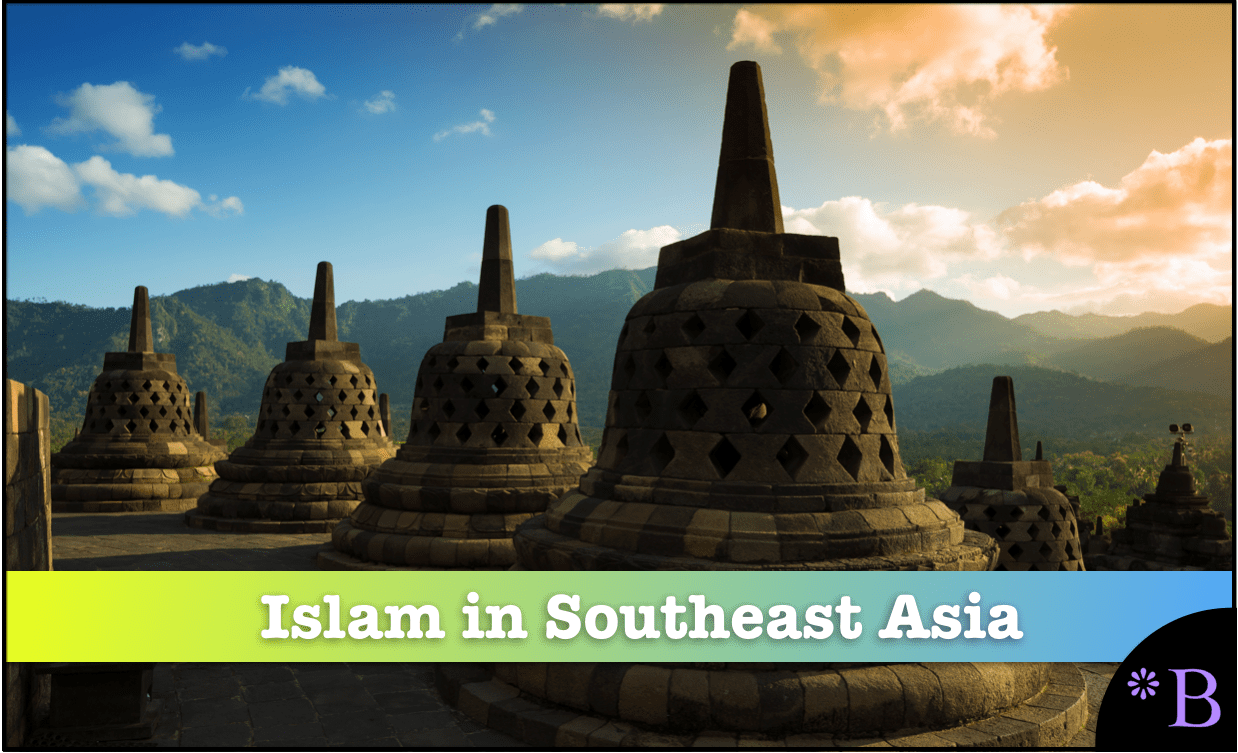A Lower Degree of Muslim Conquest is Why Southeast Asia Has the More Mild Form of Islam
Executive Summary
- Islam has different impacts depending upon where it is practiced.
- We cover why Southeast Asia’s practice of Islam is so distinct from Islam in other areas.

Introduction
One of the unexplained questions is why Islam in Southeast Asia is so much different from Islam practiced in other places in the world.
See our references for this article and related articles at this link.
How Islam Spread
The following video does an excellent job explaining how Islam was spread very differently in Southeast Asia than in the Middle East or Turkey and other places that could be conquered by Muslims.
This means that Southeast Asia has the lightest form of Islam because Muslim traders did not have the ability to conquer Southeast Asia. However, the more influence Islam has, the more dysfunctional that society behaves.
Southeast Asia was saved (mostly) from becoming a strong adherence to Islam because Southeast Asia was too far from the Middle East, and therefore, Muslims had to bring a lighter touch to their conversion. If Southeast Asia were close to Arabia, Southeast Asia would most likely have been conquered and forced into a far more problematic Islam type.
The Sultanate of Brunei
One of the major conquering forces in Southeast Asia was Brunei, which forcibly converted what is no the southern Philippines. This is explained in the following quotation.
Islam reached the Philippines in the 14th century with the arrival of Muslim traders from the Persian Gulf, Southern India, and their followers from several sultanate governments in the Malay Archipelago.
By the 15th century, half of Luzon (Northern Philippines) and the islands of Mindanao in the south had become subject to the various Muslim sultanates of Borneo and much of the population in the almost of South were converted to Islam. However, the Visayas was largely dominated by Hindu-Buddhist societies led by rajahs and datus who strongly resisted Islam. One reason could be the economic and political disasters preeuropean Muslim pirates from the Mindanao region brought during raids. – USNWC
Brunei rose to take the role of the Malaccan Sultanate in the region, which was defeated by the Portuguese in 1511 (as we will discuss).
The European Colonial Powers in Southeast Asia
The European colonial powers effectively stopped the spread of Islam in Southeast Asia. This is expressed in the following quotation.
In that century, seafaring Muslim traders and teachers from Indonesia and other neighboring
nations reached the largely pagan Philippine Islands, spreading Islam on Mindanao and Luzon. In 1521, however, the islands were colonized for Spain by Magellan, and the new occupiers prevented the further spread of Islam. Muslim leaders resisted the Spanish from the beginning; Filipino Muslims fought Spanish, American, and Japanese colonialism for almost four hundred years, and when the Philippines gained its independence in 1946, they continued their struggle against what they call “Imperial Manila.”– USNWC
If the Spanish had not colonialized the Philippines it is very likely that Brunei would have.
However, the European powers came late on the scene, and so the areas that were already Muslim tended to stay Muslim.
Indonesia and Islam
Indonesia became Muslim is that a very small number of Indonesians were converted all the way back in the 8th century due to interactions with traders. However significant conversation did not occur until the 13the century and some invasions by Muslims or many hundred years before Islam made its way to Brunei or to the Philippines. Indonesia converted to Islam slowly with areas converting as recently as the 16th century. It also has very large regional differences in what percentage of the population is Muslim. Bali for example is only around 13% Muslim and is dominated by Hindus.
The Dutch, British, and Portuguese had all had colonial influence in Indonesia, but none of them converted very much of the population.
Malaysia and Islam
While having a reputation for being more stringently Islamic, Malaysia is actually significantly less Islamic by the percentage of the population than Indonesia (around 60% versus over 87% for Indonesia).
Like the Philippines, Malaysia converted to Islam far later than Indonesia, in the 14th century. In 1511, the Malaccan Sultanate of Malaysia was defeated by the Portuguese, and then taken by the Dutch, with the British taking Singapore.
Islam in the Philippines
The largest Muslim country in Southeast Asia is Indonesia. However, Islam exists in the Philippines, as well. The Muslim areas are where virtually all of the kidnapping occurs. The Islamic areas of the Philippines are the worst areas of the Philippines, and a growing Muslim population with connections to ISIS is a threat to the Philippines’ integrity as a country in the future.
Conclusion
The more Muslim a society, the worse the outcomes are for that country and the worse the outcomes for human rights.
Countries like Saudi Arabia have enormous oil revenues, but they are very poorly distributed, and there are appalling abuses of male construction workers and female domestic workers. Islam takes over societies and keeps them in a 7th-century mentality.
Southeast Asia had the benefit of never being relatively lightly conquered by Muslims. Indonesia, the Southeast Asian country with the earliest Islamic influence and the highest percentage of its population as Muslim, is widely considered to be one of the least negatively impacted countries by Islam.